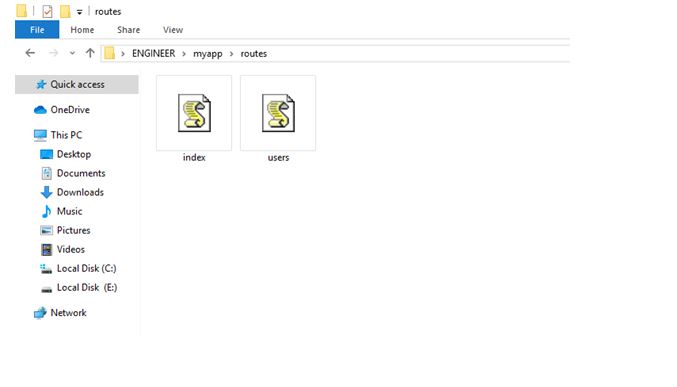
- EXPRESS MIDDLEWARE PUG TEMPLATE HOW TO
- EXPRESS MIDDLEWARE PUG TEMPLATE INSTALL
- EXPRESS MIDDLEWARE PUG TEMPLATE CODE
EXPRESS MIDDLEWARE PUG TEMPLATE HOW TO
Check out Expresss excellent guide for how to integrate Pug. You can emulate the live reload behavior of front-end frameworks such as React and Angular in Express templates using Browsersync. Pug fully integrates with Express, a popular Node.js web framework, as a supported view engine. Add Live Reload to Express Using Browsersync To overcome that, you'll use Browsersync. However, manually refreshing the browser to see updates slows down your development process. pug template, you can refresh the browser to see the changes. 🛠️ Refresh the browser to see the new page rendered on the screen. As such we require a JSON parser to parse the fields of the new product.

The handler function for this route will accept product data from the request object in JSON format. Refer to Using template engines with Express for more details. To demonstrate the use of Express' built-in middleware, let us create a route for the HTTP POST method for adding a new product. pug doesn't use title locally instead, the template it extends, layout. json file to run nodemon and delete the test script: defines a local title variable in index.

🛠️ Create a dev script command in your package. js back-end tutorial: a chance to learn the basics of back-end JavaScript using the Express framework and the Pug (formerly Jade) template engine.
EXPRESS MIDDLEWARE PUG TEMPLATE INSTALL
The command above is the equivalent of running npm install -save -dev nodemon.
EXPRESS MIDDLEWARE PUG TEMPLATE CODE
🛠️ As such, install nodemon as a development dependency: npm i -D nodemon Templating engines are used to remove the cluttering of our server code with HTML, concatenating strings wildly to. Wenn Sie sich also intensiv mit Node.js und Express auseinandersetzen, fhrt kein Weg an Pug vorbei. You'll use nodemon to monitor your project source code and automatically restart your Node.js server whenever it changes. js: touch index.js Create an npm script to run the application

s dng Template Engine trong Express bn cn phi khai bo thm cho Express mt thuc tnh, chng ta s khai bo 2 thuc tnh sau trong file app.js ca d n : 1. 🛠️ Then, create the entry point of the application, a file named index. Bn cn phi ci t Pug vo d n ca bn bng cch m terminal v g dng lnh : npm install -save pug. npm install pug -save Next, create a sub-directory inside the root directory for keeping. 🛠️ Execute the following command within the whatabyte -portal directory to initialize your Node.js project with default settings: npm init -y Express + Pug In this section we will have a quick look at Pug, a high-performance HTML templating engine, and do away with loading of HTML files. 🛠️ Create a project directory named whatabyte -portal anywhere in your system and make it your current directory: mkdir whatabyte-portal If you need to install Node.js and npm, use any of the official Node.js installers provided for your operating system. By default, the view helper paginate.href is already executed with the inherited req variable.
as the href in Prev or Next ).We tested this tutorial using Node.js v12. paginate.href (req) When you use the paginate middleware, it injects a view helper function called paginate.href as, which you can use in your views for paginated hyperlinks (e.g. You'll build a login portal for a restaurant named WHATABYTE using server-side rendering (SSR): Look for the 🛠️️ emoji if you'd like to skim through the content while focusing on the build steps. I want to then take that value of that hidden input and put it inside the successRedirect, however it says req is not defined: router.post("/login", body('backurl').trim().escape(), thenticate("local", )īut it just keeps reloading and doesn't work and doesn't go to any URL.In this tutorial, you'll learn how to build a simple and clean Node.js server-side rendered application using the Express framework and Pug templates styled with CSS.Īs a bonus, you'll learn how to streamline your Node.js development workflow by using nodemon to restart the server and browser -sync to reload the browser whenever relevant source files change. I am trying to render the login page with a message on failure, and if on success I want to redirect the user back to the last page they have been to, of which URL is passed as hidden input inside the pug template.

I am working on the login system using passport.js and express with pug templates.


 0 kommentar(er)
0 kommentar(er)
